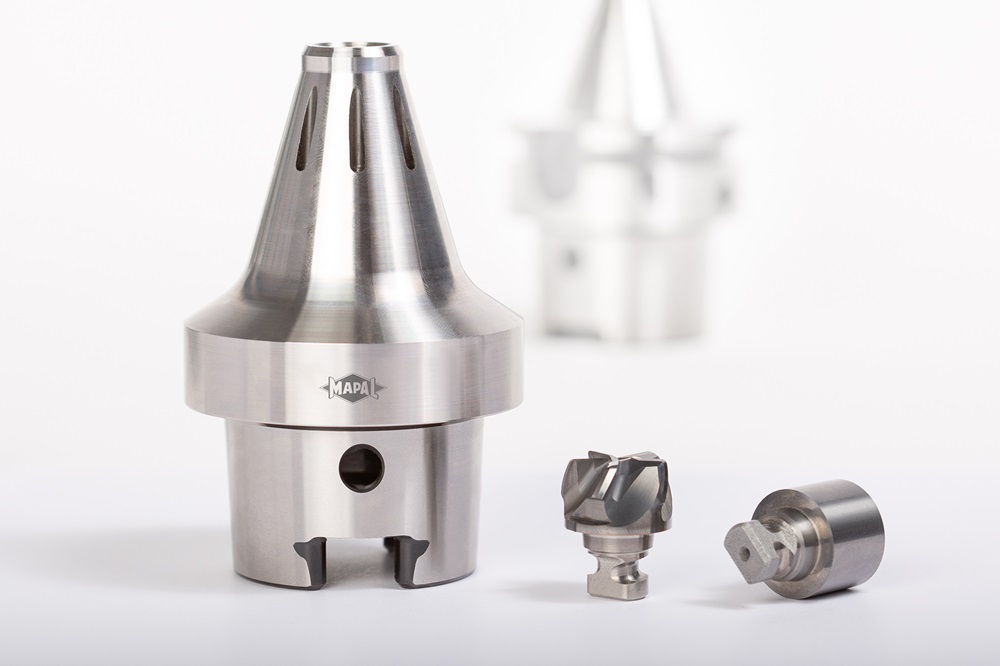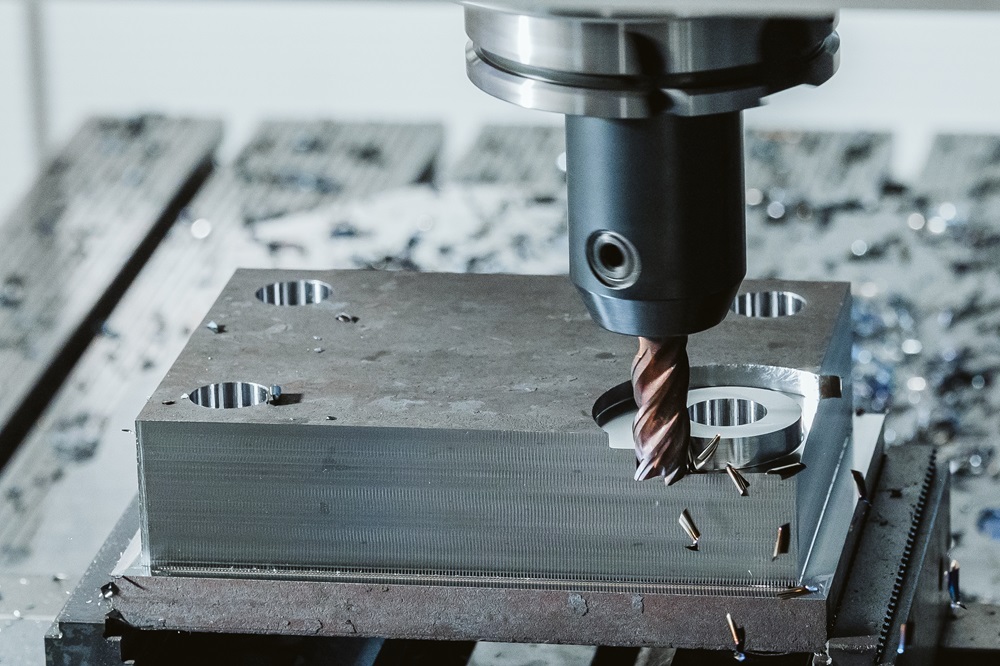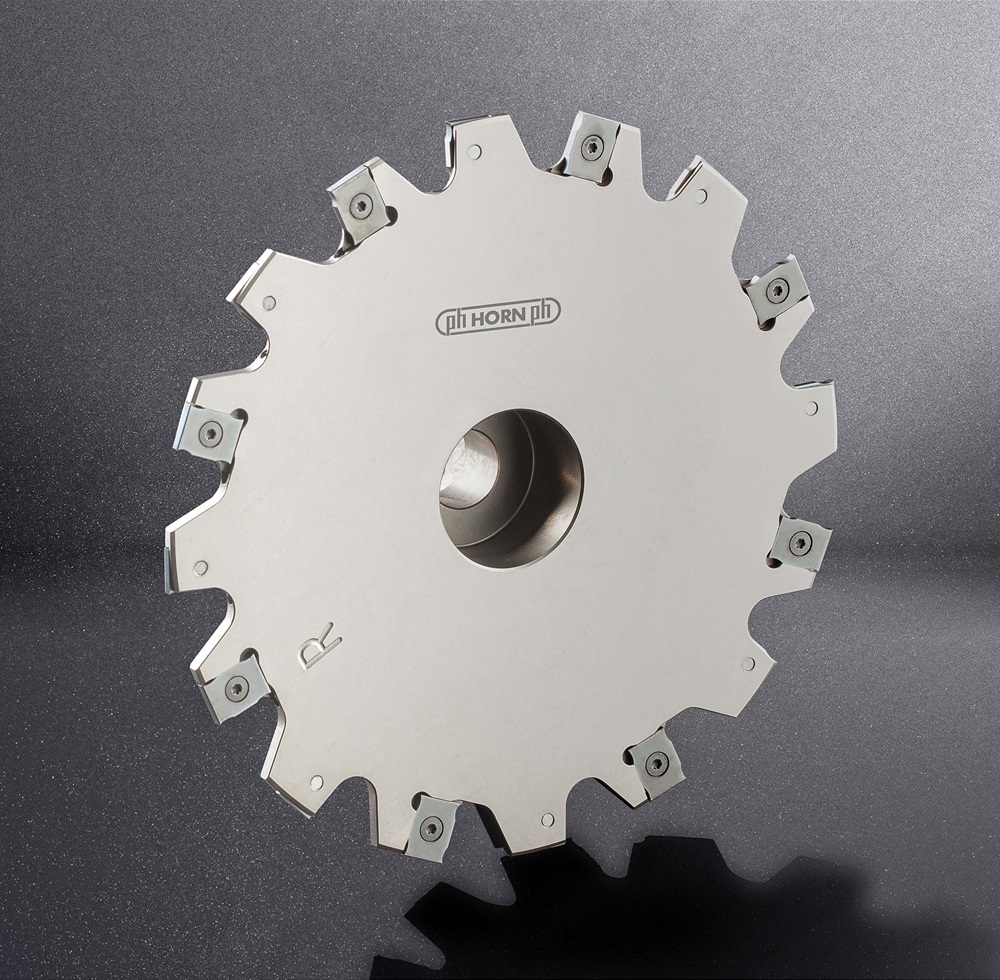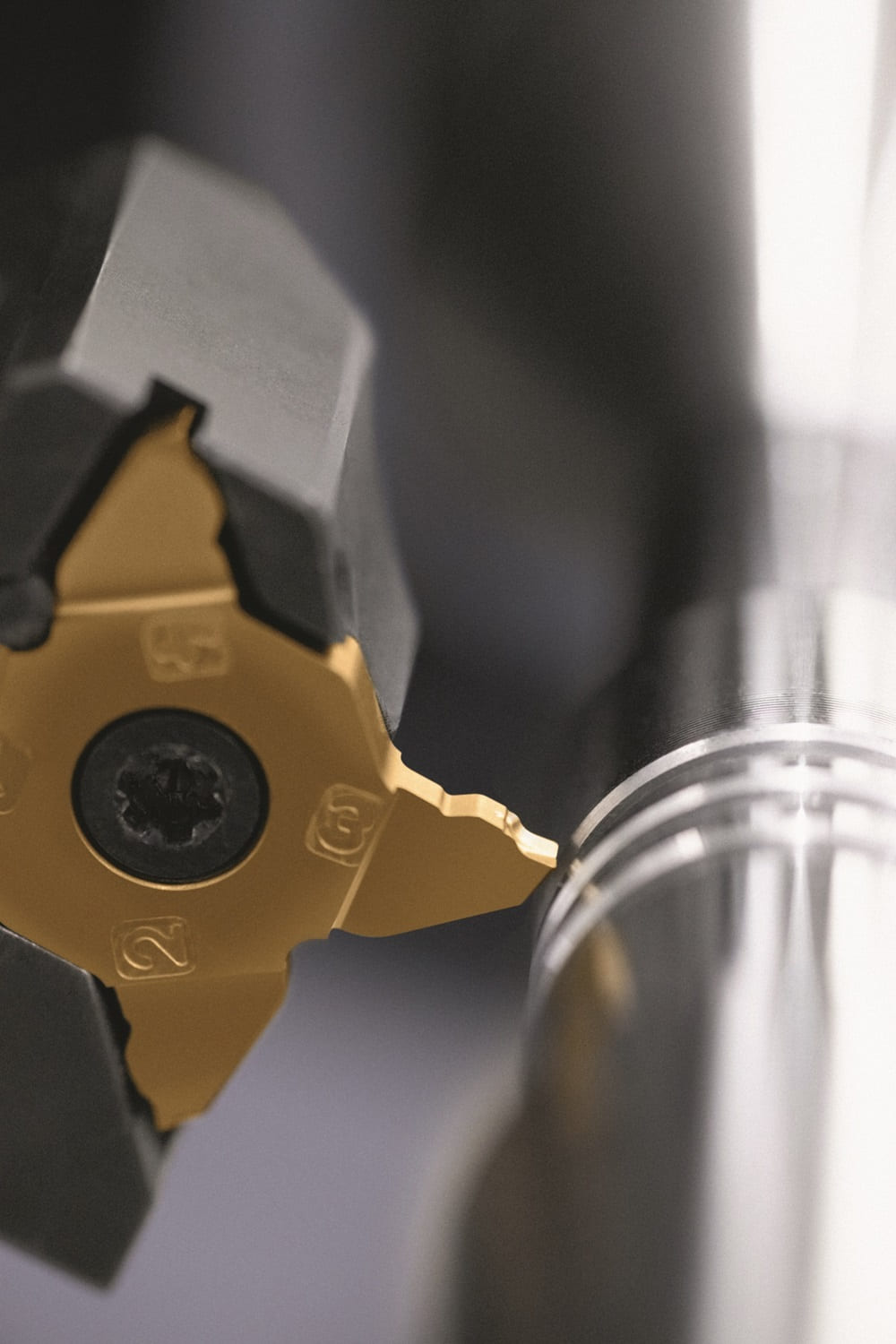Empower Your Aluminium Machining’ was the motto of Mapal’s presence at this year’s AMB trade fair in Stuttgart last month. Among the product innovations on show was a new patent-pending bayonet-type connection for replaceable-head milling systems. Users benefit from easy handling, a rigid connection and optimum cooling.
The functional principle is simple: users insert the replaceable head and rotate it by 90°
to lock it in place, which is significantly easier than with a threaded system. The bayonet system achieves high rigidity and good force distribution thanks to the large cylinder face connection.
Mapal also presented a new holder design with a ring of cooling channel bores for a higher cooling volume. The coolant is channelled directly to the cutting edges, increasing tool service life and machining quality. Notably, the greater rigidity of the milling heads improves form and position tolerances, while simultaneously enhancing process smoothness and tool life.
Another innovation in the spotlight helps to protect aeroplanes against lightning strikes, where all parts require connection in an electrically conductive manner. For this purpose, paint requires removal in the area of drill bores during assembly. Mapal can now offer a tool with a patented micro-stop cage for this so-called spot facing, which replaces conventional brushes. The tool also performs countersinking, chamfering and deburring.
The new Mapal spot-facing tool, a plug-and-play solution, rotates in a micro-stop cage and only protrudes as far as the material that requires removal. With its long service life, one tool can replace several hundred brushes and is therefore not only reliable, but also economical.
When used for deburring, the cutting edges are completely inside the cage, leaving 0.1 mm of the burr. The depth stop is also useful for countersinking or chamfering.
More information www.mapal.com



















